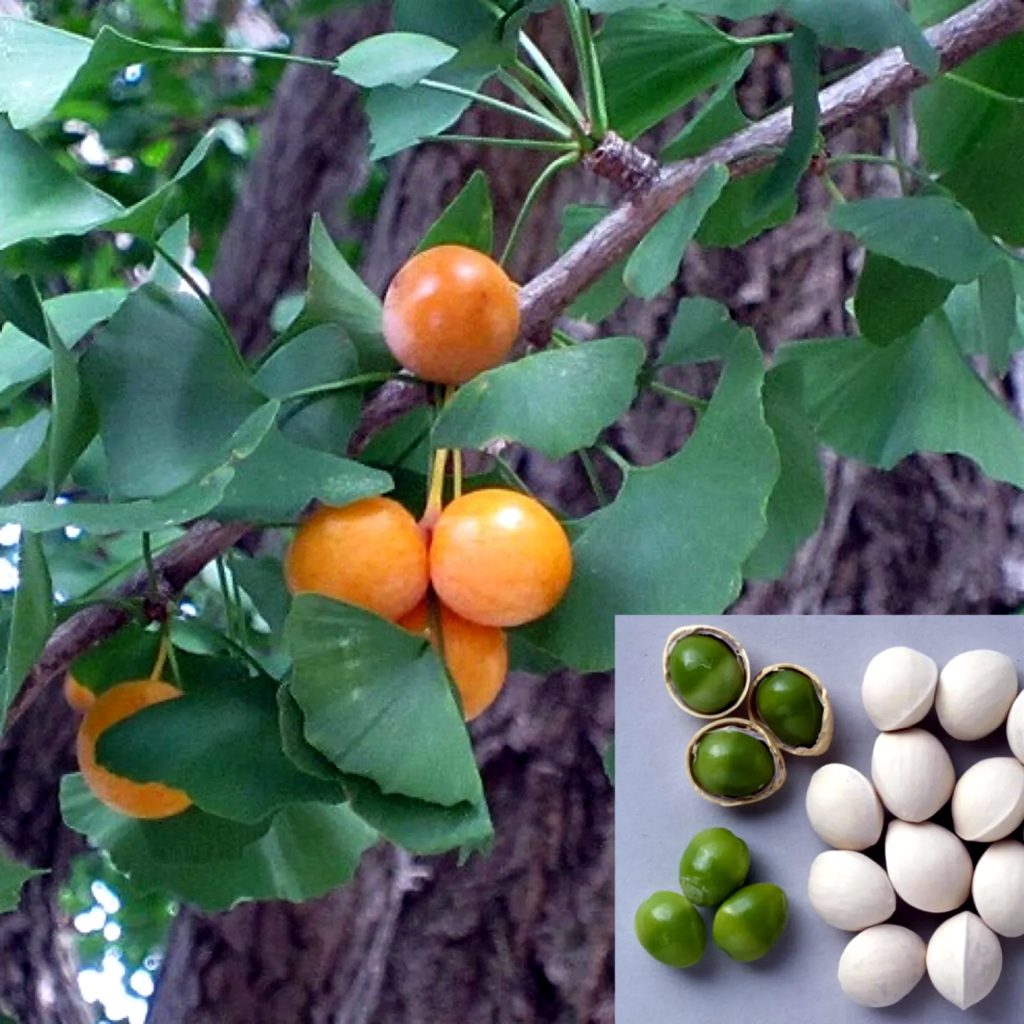
The ginkgo trees that stand in the park now grow clusters that are golden in color. Also, whether you go to a supermarket or a greengrocer, as the name suggests, you will find silver ginkgo nuts in bags. Gingko nuts are in season from early September to mid-October, although this varies by region. The amount of chlorophyll inside is the largest, and when heated, it becomes a beautiful green color and has the most delicious taste. If you close the lid and bake the popping ginkgo nuts for a while, the jade-colored fruit will come out. When steamed in chawanmushi, the color of carotene comes out and becomes slightly yellowish. In any case, the unique flavor of ginkgo nuts with a slightly bitter taste is unforgettable. From early November to December, the ginkgo nut flesh turns yellow and shrinks. The gingko nuts inside are also decomposed of chlorophyll, leaving only the yellow pigment component. Of course, the unique flavor of ginkgo will be lost.
今、公園に立つ銀杏の大木には黄金色に輝く実が鈴なりです。また、スーパーに行っても八百屋さんに行っても、その名の通り、銀色をした銀杏が袋に入って並んています。銀杏は、地域によって違いますが、9月初旬~10月中旬頃の今が旬で、果肉の色がやや乳黄色になって殻も堅くなります。中のクロロフィルの量が最も多くなり、加熱すると綺麗な緑色になり、味もいちばん美味しくなります。ふたを閉めて弾ける銀杏をしばらく焼くと、翡翠色をした実がポロリと出てきます。茶碗蒸しにするとカロチンの色が出てやや黄色っぽくなります。いずれにしろ、少し苦味の効いた銀杏独特の風味は忘れ難いものです。これも11月上旬~12月になると、銀杏の果肉の色が黄色になり縮んできます。中の銀杏もクロロフィルが分解され、黄色の色素成分のみが残ります。もちろん銀杏独特の風味も無くなってしまいます。
